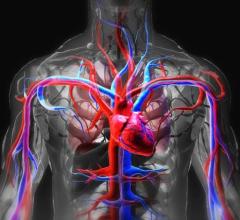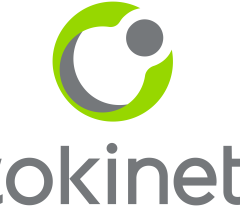
Eugenio Cingolani, MD. Photo by Cedars-Sinai.
June 19, 2024 — When electrophysiologist Eugenio Cingolani, MD, isn’t seeing patients, he can usually be found in his laboratory, investigating improved treatments for heart rhythm disorders.
Cingolani, director of Cardiogenetics and Preclinical Research in the Department of Cardiology in the Smidt Heart Institute at Cedars-Sinai, is exploring new ways to help patients with ventricular tachycardia (VT), a recurring, abnormally fast and irregular heartbeat that starts in the lower chambers, or ventricles, of the heart. If VT lasts for more than a few seconds at a time, it can be life-threatening.
Current therapies for recurrent VT are not very effective and have unpleasant side effects. Cingolani is studying the effectiveness of a novel, noninvasive cell-based therapy to treat VT. His approach uses stem cell-derived exosomes--tiny fluid-filled sacs found in cells--to help regrow healthy heart muscle and prevent disruptive electrical signals. His next step is to move his promising research into a first-in-human clinical trial.
Thanks to a $6 million grant from the California Institute for Regenerative Medicine (CIRM), the state’s taxpayer-funded stem cell research initiative, Cingolani is closer to that goal.
Eduardo Marbán, MD, PhD, executive director of the Smidt Heart Institute and the Mark S. Siegel Family Foundation Distinguished Professor, said the funding is the first-ever CIRM grant focused on VT as well as the first to receive clinical research funding from CIRM for the use of exosomes as a therapy.
“This grant is the most advanced offered by the California Institute for Regenerative Medicine to fund the laborious studies required to procure regulatory approval for first-in-human trials,” Marbán said. “The new approach to treating VT is based 100% on Cedars-Sinai discoveries.”
The Cedars-Sinai Newsroom recently talked with Cingolani, an associate professor of Cardiology, to learn more about his quest to find an effective new treatment for VT.
Q: Tell us about VT and why it can be such a serious heart condition?
VT is caused by faulty electrical signaling in the heart and sometimes develops after a heart attack. Patients experience a very fast heart rate--often 150 times a minute or more. A normal resting heart rate for adults is between 60 and 100 beats a minute. The rapid heartbeat may only last for a few seconds, but during that time, the heart is beating so fast that it can’t get enough blood to the rest of the body. Patients may feel a fluttering in the chest, chest pain, shortness of breath and dizziness or lightheadedness as a result. If VT is not treated, it can lead to cardiac arrest, which is when the heart stops beating. In fact, VT is the most common cause of sudden cardiac arrest.
Q: How is VT typically treated?
Right now, there are several treatment options, but none of them are optimal. They include medications that are not very effective and cause unpleasant side effects, an implantable cardioverter-defibrillator (or ICD) that provides an internal shock to correct the heartbeat, and a procedure called catheter ablation. This is a complex procedure that destroys the abnormal heart tissue that’s causing the rapid heartbeat. Unfortunately, ablation also destroys healthy heart tissue in the process. Another drawback is that ablation is often limited to patients who can access specialized centers that perform the procedure.
Q: How do exosomes work to treat VT?
Exosomes are tiny vesicles, secreted by cells, that naturally heal heart scars. The idea is to infuse the exosomes into diseased heart muscle that is predisposed to VT with the goal of decreasing scar tissue and preventing VT. Current ablation procedures destroy heart tissue and tend to worsen heart function. Even when they work, VT often recurs over time. Our therapy might prevent VT without those limitations.
Q: How does CIRM grant funding help future patients?
The grant is significant because it allows us to complete the necessary preclinical research as well as the safety and efficacy studies that are needed before the therapy moves into a clinical trial for patients. It represents a unique opportunity to advance our therapy to the next level and potentially be able to treat patients with ventricular arrhythmias in a better way, without destroying healthy heart tissue. I’m grateful to the California Institute for Regenerative Medicine for helping us advance this science.
Q: How quickly might we see a clinical trial for patients?
We are aiming to obtain permission from the FDA [Food and Drug Administration] to perform a first-in-human study within the next two years. This would be an exciting development for research and for patients.
For more information: www.cedars-sinai.org


 August 06, 2025
August 06, 2025 









